Brain-derived erythropoietin protects from intermittent hypoxia-induced cardiorespiratory dysfunction and oxidative stress in mice
- PMID: 29697839
- PMCID: PMC6047438
- DOI: 10.1093/sleep/zsy072
Brain-derived erythropoietin protects from intermittent hypoxia-induced cardiorespiratory dysfunction and oxidative stress in mice
Abstract
Study objectives: Based on the fact that erythropoietin (Epo) administration in rodents protects against spatial learning and cognitive deficits induced by chronic intermittent hypoxia (CIH)-mediated oxidative damage, here we tested the hypothesis that Epo in the brain protects against cardiorespiratory disorders and oxidative stress induced by CIH in adult mice.
Methods: Adult control and transgenic mice overexpressing Epo in the brain only (Tg21) were exposed to CIH (21%-10% O2-10 cycles/hour-8 hours/day-7 days) or room air. After CIH exposure, we used the tail cuff method to measure arterial pressure, and whole-body plethysmography to assess the frequency of apneic episodes at rest, minute ventilation, and ventilatory responses to hypoxia and hypercapnia. Finally, the activity of pro-oxidant (XO-xanthine oxidase, and NADPH) and antioxidant (super oxide dismutase) enzymes was evaluated in the cerebral cortex and brainstem.
Results: Exposure of control mice to CIH significantly increased the heart rate and arterial pressure, the number of apneic events, and the ventilatory response to hypoxia and hypercapnia. Furthermore, CIH increased the ratio of pro-oxidant to antioxidant enzymes in cortex and brainstem tissues. Both physiological and molecular changes induced by CIH were prevented in transgenic Tg21 mice.
Conclusions: We conclude that the neuroprotective effect of Epo prevents oxidative damage in the brain and cardiorespiratory disorders induced by CIH. Considering that Epo is used in clinics to treat chronic kidney disease and stroke, our data show convincing evidence suggesting that Epo may be a promising alternative drug to treat sleep-disorder breathing.
Figures
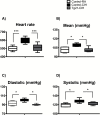
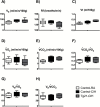

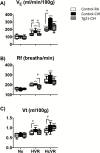
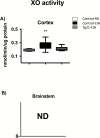
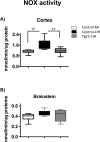
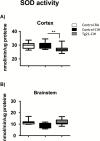

Similar articles
-
Estradiol Protects Against Cardiorespiratory Dysfunctions and Oxidative Stress in Intermittent Hypoxia.Sleep. 2017 Aug 1;40(8). doi: 10.1093/sleep/zsx104. Sleep. 2017. PMID: 28633495
-
Progesterone decreases apnoea and reduces oxidative stress induced by chronic intermittent hypoxia in ovariectomized female rats.Exp Physiol. 2020 Jun;105(6):1025-1034. doi: 10.1113/EP088430. Epub 2020 May 6. Exp Physiol. 2020. PMID: 32196792
-
Protective roles of estradiol against vascular oxidative stress in ovariectomized female rats exposed to normoxia or intermittent hypoxia.Acta Physiol (Oxf). 2019 Feb;225(2):e13159. doi: 10.1111/apha.13159. Epub 2018 Jul 17. Acta Physiol (Oxf). 2019. PMID: 29947475
-
Cardiovascular and ventilatory acclimatization induced by chronic intermittent hypoxia: a role for the carotid body in the pathophysiology of sleep apnea.Biol Res. 2005;38(4):335-40. doi: 10.4067/s0716-97602005000400004. Biol Res. 2005. PMID: 16579514 Review.
-
The neuronal control of hypoxic ventilation: erythropoietin and sexual dimorphism.Ann N Y Acad Sci. 2009 Oct;1177:151-61. doi: 10.1111/j.1749-6632.2009.05028.x. Ann N Y Acad Sci. 2009. PMID: 19845617 Review.
Cited by
-
The role of reactive oxygen species in cognitive impairment associated with sleep apnea.Exp Ther Med. 2020 Nov;20(5):4. doi: 10.3892/etm.2020.9132. Epub 2020 Aug 25. Exp Ther Med. 2020. PMID: 32934669 Free PMC article.
-
Prebiotic administration modulates gut microbiota and faecal short-chain fatty acid concentrations but does not prevent chronic intermittent hypoxia-induced apnoea and hypertension in adult rats.EBioMedicine. 2020 Sep;59:102968. doi: 10.1016/j.ebiom.2020.102968. Epub 2020 Aug 30. EBioMedicine. 2020. PMID: 32861200 Free PMC article.
-
Cerebral Erythropoietin Prevents Sex-Dependent Disruption of Respiratory Control Induced by Early Life Stress.Front Physiol. 2021 Dec 20;12:701344. doi: 10.3389/fphys.2021.701344. eCollection 2021. Front Physiol. 2021. PMID: 34987412 Free PMC article.
-
Coping with hypoxemia: Could erythropoietin (EPO) be an adjuvant treatment of COVID-19?Respir Physiol Neurobiol. 2020 Aug;279:103476. doi: 10.1016/j.resp.2020.103476. Epub 2020 Jun 6. Respir Physiol Neurobiol. 2020. PMID: 32522574 Free PMC article. Review.
-
β-Adrenoceptor blockade prevents carotid body hyperactivity and elevated vascular sympathetic nerve density induced by chronic intermittent hypoxia.Pflugers Arch. 2021 Jan;473(1):37-51. doi: 10.1007/s00424-020-02492-0. Epub 2020 Nov 19. Pflugers Arch. 2021. PMID: 33210151 Free PMC article.
References
-
- Young T, et al. . Epidemiology of obstructive sleep apnea: a population health perspective. Am J Respir Crit Care Med. 2002;165(9):1217–1239. - PubMed
-
- Gileles-Hillel A, et al. . Biological plausibility linking sleep apnoea and metabolic dysfunction. Nat Rev Endocrinol. 2016;12(5):290–298. - PubMed
-
- Laouafa S, et al. . Estradiol protects against cardiorespiratory dysfunctions and oxidative stress in intermittent hypoxia. Sleep. 2017;40(8). doi:10.1093/sleep/zsx104. - PubMed
Publication types
MeSH terms
Substances
LinkOut - more resources
Full Text Sources
Other Literature Sources
Research Materials

